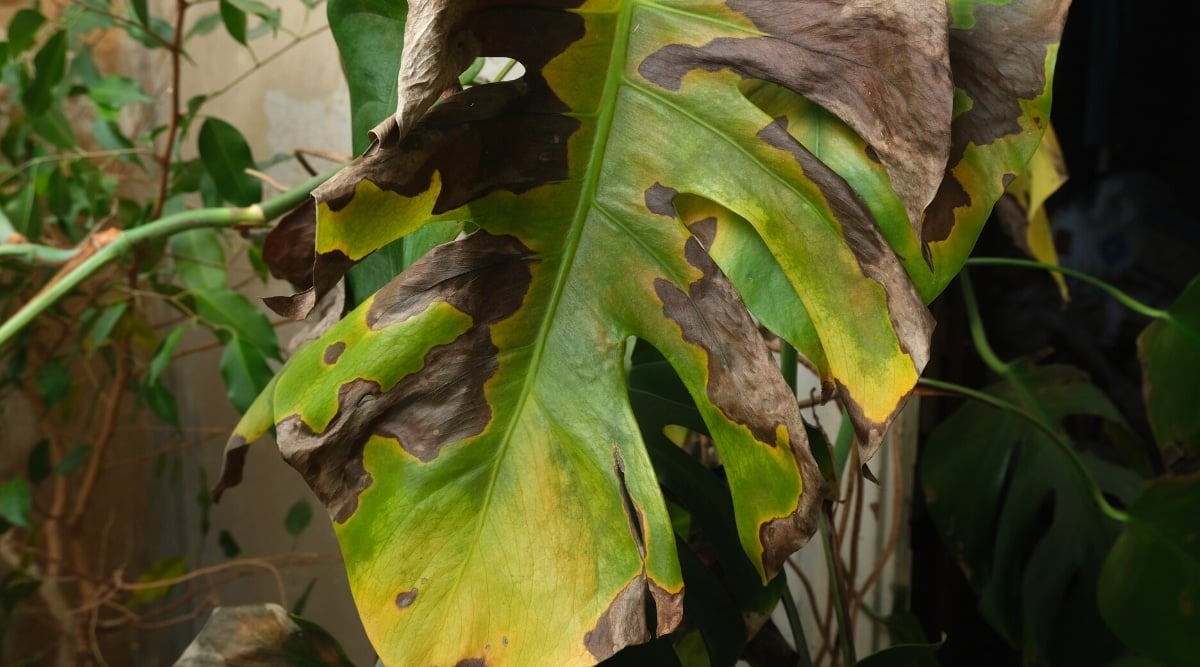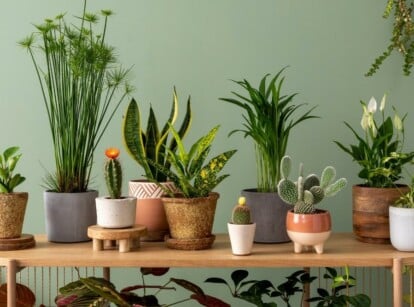7 Reasons Your Monstera Has Droopy, Wilted Leaves
If your Monstera plant is starting to wilt or droop, there are several issues that could be the cause. Many of these common problems can be fixed if addressed early on. In this article, gardening expert and houseplant enthusiast Madison Moulton examines the most common reasons for drooping and wilted leaves in Monstera plants.

Contents
If you’re an avid houseplant lover, you likely have some type of monstera in your indoor plant collection. Shooting to stardom in recent years for their massive leaves and tropical look, it’s no wonder so many gardeners have fallen in love with these plants.
Unfortunately, monsteras are not without their problems. Yellowing, curling and wilting are all common issues many monstera owners are faced with.
If you notice droopy, wilting leaves on your monstera, consider which of these 7 potential causes is the most likely to resolve the problem as soon as possible.
Underwatering

The first reason to look out for is one shared amongst almost all houseplants – underwatering. When your monstera lacks moisture, the cells cannot hold their structure anymore (as they are mostly filled with water), causing the leaves to wilt and the stems to bend over.
If the issue is prolonged, the edges of the leaves may begin to turn brown and older leaves may yellow at the center.
Luckily, the fix for this issue is probably the simplest – water as soon as possible. Within a few hours, once the stems have soaked up the moisture and the cells are full again, the leaves should return to normal.
If the soil is so dry it has become compacted, it’s best to water from the bottom, leaving the container in a bucket or sink of water so it can soak up as much as possible.
Some houseplant owners use this wilting as an indicator that their plant needs water, adding moisture once these signs are spotted. However, once wilting begins, your plant is already too stressed to grow successfully.
Consistent moisture stress like this will lead to long-term growth problems and certainly won’t make your monstera as healthy as it could be.
Instead, test the soil every few days to determine the best time to water. Once the top half of the soil in the container has dried out, it’s time to water again. Keep your watering consistent to avoid any future moisture stress.
Overwatering

In any list discussing houseplant problems, overwatering is likely to feature prominently, if not at the top. That’s because it is both incredibly common and also one of the leading causes of early houseplant demise. Unfortunately, although we want to give them all the love in the world, too much attention in the moisture department is a very bad thing that can lead to serious problems, if not the death of the plant.
Drooping and wilting is just one of the many signs of an overwatered monstera. You should also keep an eye out for yellowing leaves, mushy stems and soggy soil that doesn’t dry out.
If you pull the plant out of the pot, you will see that it is limp and that the soil has retained too much moisture. In severe cases, the roots will begin to rot, turning black beneath the soil line.
Root rot can be caused by watering too early while the soil is still moist. But that’s not the only concern. Monsteras planted in pots with no drainage, or left in pot covers without holes after watering, can also encounter the same problem. Even leaving your plant in a full drip tray in a low-light area can lead to root problems.
At the first sign of root rot, you’ll need to repot your plant. Remove all the soil around the roots and trim any rotten areas of damage. Repot into fresh soil and a clean pot to give your monstera a chance to recover.
Small Pot

Monsteras are known for their quick growth, often outgrowing their containers when left in the perfect conditions. Regularly putting out new leaves, they can become unruly, with massive root systems that need space to expand.
If the roots begin to wrap around each other and have nowhere to move to, your monstera will struggle to absorb the moisture and nutrients needed to survive.
The soil will also begin to break down as it gets replaced by roots, leaving less to hang onto moisture whenever you water. Combined, these issues lead to a lack of water in the leaves and stems which results in wilting.
The quick fix for this problem is to repot your monstera, giving it more space to grow. Choose a pot around one size up for a slower-growing plant and two sizes up for a quick-growing plant. Remove the plant from its pot and tease the roots to release them.
Using fresh houseplant potting mix, repot into the larger container, watering immediately after to help the roots settle in.
Once you’ve repotted, it may take a week or two for your monstera to recover. But once the roots are growing happily in their new home, the leaves should return to normal.
Excessive Sunlight

Monsteras are native to tropical forests where the vines climb up and around trees to reach for sunlight. Here, they are protected from harsh direct sun by the tree canopy above. The dappled light they receive in these native habitats is roughly equal to bright indirect light found indoors.
That means monsteras are not used to direct sun for long periods, especially in harsher climates. If the sun is too strong, the leaves may begin to wilt due to a sudden lack of moisture. The leaves may also start to curl away from the light source to protect them from burning.
Or you’ll see the leaves and stems moving away from the light source and into the protection of nearby shade if possible.
If your monstera is wilting and in direct sunlight, it’s important to move the plant immediately. This will limit the chances or any brown spots appearing on the leaves from burning. If the soil is dry, give the plants water to help out the roots and bring the leaves back to normal.
Keep your monsteras out of the path of direct sunlight to avoid this problem in the future. They can handle some gentle morning sun but need to be protected in the hottest parts of the day. An area close to a bright window but just out of the direct sun’s rays is best.
Nutrient Imbalance

Monsteras need the right balance of macronutrients and micronutrients to grow their best. If the soil is deficient in any of these nutrients, or has too much of any of the nutrients, your monstera is going to struggle. There are many signs of nutrients imbalance in these plants, one of which is wilting.
If you haven’t repotted your monstera in a while, nutrient deficiency is a possibility. Once the plant uses up all the nutrients in the soil in its container, it will struggle to grow without fertilizer or a soil refresh. But if you repot the recommended amount for your monstera, this issue is unlikely.
Rather, it is probably overfertilizing that is the cause. Excess fertilizer in the soil leads to root issues that can cause stunted growth and wilting in the leaves. We may think that more fertilizer can only help our monsteras grow, but in fact, the opposite is the case.
If you suspect you’ve overfertilized, flush the soil with filtered water until it runs clear. Then, stop fertilizing for a few months to give the roots time to recover. If the damage is not too severe, the leaves should return to normal soon.
Incorrect Temperature

Although less of a problem when growing indoors, incorrect temperatures can also lead to wilting. This can be caused by unusually high temperatures, but as they prefer warmth, it is typically the cold that does the most damage.
Thanks to the conditions in their native habitats, monsteras prefer temperatures above 60F, preferably around 75F to 80F for optimal growth.
They will drastically slow growth in temperatures below 60F to conserve their energy. If temperatures drop even lower, below 50F or worse, they will face permanent damage.
One of the signs of this damage is wilting. You may also notice black spots on the leaves where the plant was directly exposed to any extreme cold. Once the cold hits, remove the plant from cold spots and away from windows quickly to prevent an early demise.
Pests

Finally, the last issue to look out for is pests. Depending on the problem, these are usually easy to spot – especially if there are so many that the leaves of your monstera have begun to wilt.
Monsteras are susceptible to many common indoor pests, including mealybugs, spider mites, scale and soil-borne pests like fungus gnats.
Sap-sucking pests settle on the leaves and begin doing their damage, leading to yellow or brown spots and disfiguration. If the pest problem is not controlled, the leaves will start to wilt and will eventually die off.
Most pests can be removed with horticultural oil or insecticidal soap. You’ll likely need to apply the treatment a few times before the problem is gone. Prune off any affected leaves to help the plant recover quicker.
Final Thoughts
Now that you understand some of the reasons your Monstera may start to wilt, it’s important to start remedying the situation so that it doesn’t progress into something that threatens the overall integrity of your plant. By following the steps provided above, you’ll have your Monstera back into good health in no time!









